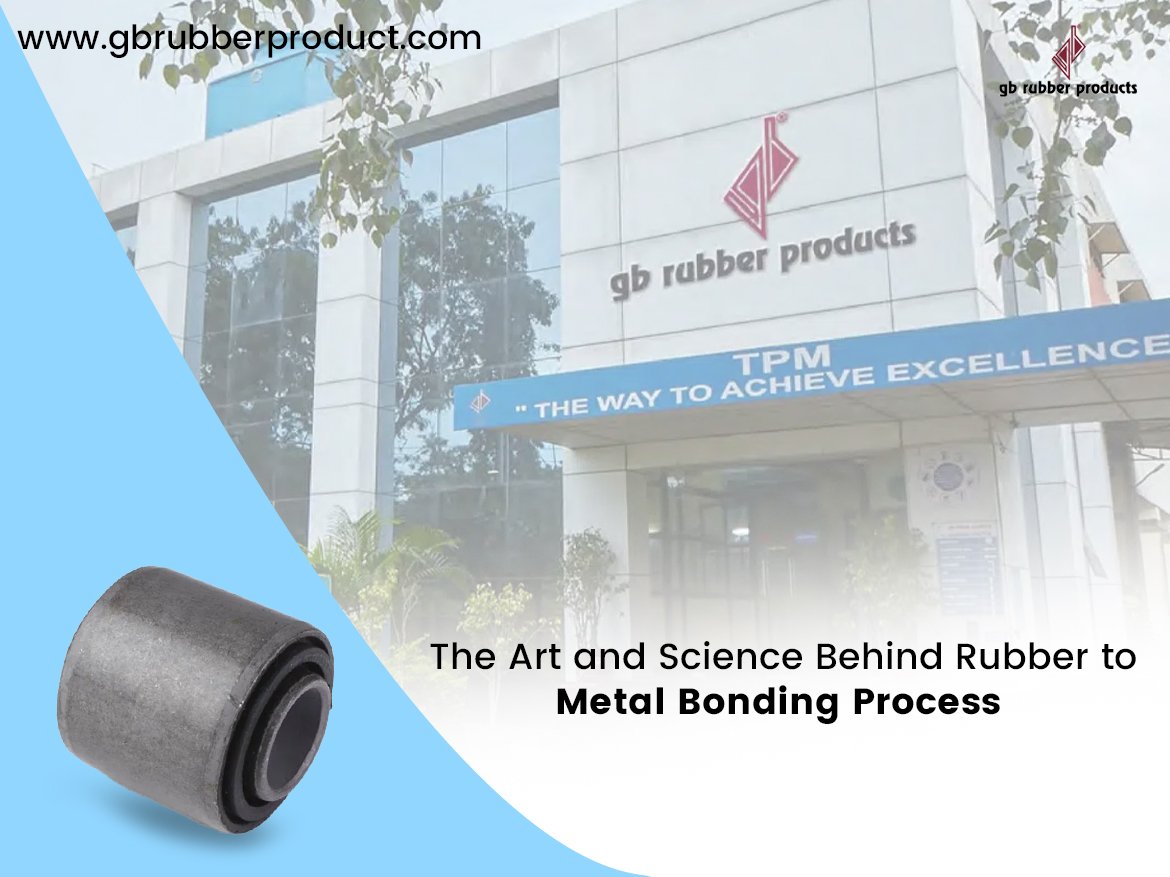The rubber to metal bondingtechnique stands out in sectors as diverse as railways and defense for its ability to provide components with the perfect balance of strength and flexibility.
Products manufactured using this process are pivotal in critical industries ranging from aerospace, automotive, power, and more, where the durability of metal meets the resilience of rubber to create components that withstand extreme stress.
This blog will explore the process behind rubber-to-metal bonding and discuss its application across various industries.

What is rubber-to-metal bonding?
Rubber-to-metal bonding is a manufacturing process utilized by almost every rubber products and rubber compound manufacturer in India and overseas. The process involves establishing a permanent and durable bond between a rubber and a metal part to build custom components used in a range of machinery and equipment.
These rubber-to-metal bonded products contribute significantly to the NVH (Noise, Vibration & Harshness) applications and enhance the functionality and longevity of machinery used in demanding sectors such as railways and defense, automotives, and more.
Steps Involved in Rubber-to-Metal Bonding Process
- Surface Preparation of Rubber and Metal: The initial step in the bonding process starts with surface preparation. Engineers ensure that the surface is clean, rough, and oil-free to enhance the adhesion qualities of the final product. In some cases, a chemical or a primer may be applied to enhance the quality of the bonding process, which directly depends on the rubber and metal materials chosen. Some of the common materials used for the rubber to metal bonding are
| Rubber | Metals |
|
|
- Adhesive Application: Once the surfaces are clean and oil-free, the adhesive is applied on materials metal surfaces by following the designed technique. There are instances when a two-coat adhesive system, which contains a primer layer and then an adhesive top-coat layer, is used to bond the rubber and metal. The component is introduced to a heat-drying oven for proper drying after the dipping, rolling, and spraying processes for perfect bonding.
- Molding: Once the adhesive is applied and it dries, the crucial step is molding the rubber and the metal together, also known as the curing process. The rubber and metals are inserted into a cavity and brought under the required heat and pressure. This typically activates the chemicals in the adhesive and starts creating a reaction. Some notable molding processes are transfer, compression, and injection molding. This stage ensures a solid bond between the rubber and metal, resulting in reliable rubber bonded products.
- Testing and Quality-Check: Following the molding process, these products undergo stringent testing to ensure they meet the essential quality standards. This thorough examination also checks the final product’s durability, functionality, and longevity. The products manufactured at the GB Rubber Product facility also undergo rigorous testing to ensure the highest quality standards.
Rubber-to-Metal Bonded Products
The advanced technique incorporated for the rubber-metal bonding process has introduced various high-performance products. Let’s look at some of the leading innovations from this essential rubber manufacturing process.
- Engine Mounts (Automotive): The automotive industry uses rubber-to-metal bonded engine mounts to provide anti-vibration features and structural stability for a smooth and safe ride.
- Machinery Shock Absorbers (Industrial Machinery): Shock absorbers are a crucial component to dampen the vibration and enhance the overall performance of the machinery.
- Seals and Gaskets: O ring manufacturers leverage rubber-to-metal bonding process to produce o ring seals and gaskets with capabilities guaranteeing the leak-free functioning of the applications.
- Anti-vibration mounts: The mounts produced from rubber-to-metal bonding help to reduce the noise and minimize the wear and tear of the machinery.
- Hydraulic Seals:These components ensure resistance to pressure and serve the sealing purpose by effectively contributing to the efficiency of the applications.
Applications Across Industries
Rubber to metal bonding components are utilized in various industries, enhancing the overall function and performance of the operating machinery and equipment. Some notable applications include:
- Industrial Machinery: Seals and gaskets are used in heavy machinery to provide vibration isolation and improve the efficiency of the machines.
- Automotive Applications: Components like engine mounts and suspension systems are used to enhance comfort and reliability and reduce the noise in the vehicle.
- Railway Components: Rail pads, buffers, and suspension elements are used to reduce train noise and vibration.
- Aerospace Components: Vibration isolators and seals ensure reliability in extreme conditions.
- Marine Applications: ngine mounts and seals placed in ships and boats ensure the ability to face harsh medical conditions.
Read More – Exploring the Materials and Prominent Techniques in the Rubber Moulding
GB Rubber – Your Partner for Preferred Rubber Compounds in India
GB Rubber is one of the leading rubber compound manufacturer in India that aims to push the boundaries of innovation and excellence in the rubber manufacturing industry, promising enhanced durability and longevity in diverse applications.
Explore the best range of rubber products today at www.gbrubberproducts.com and talk to our expert for further details.



